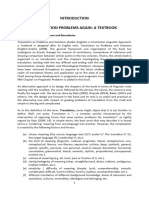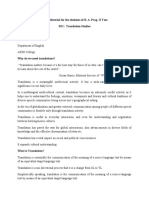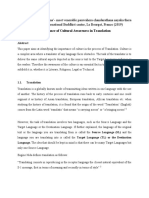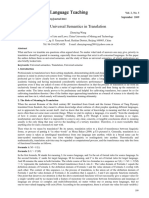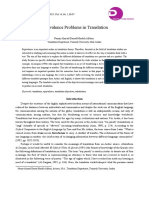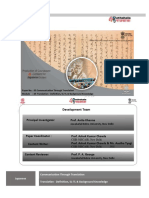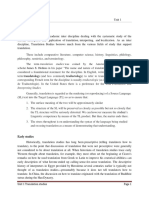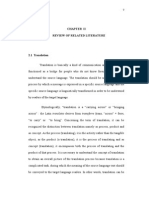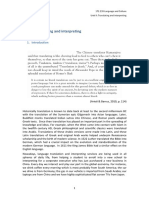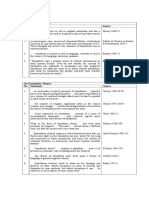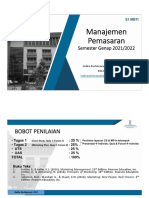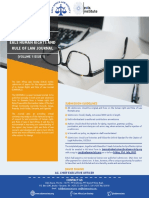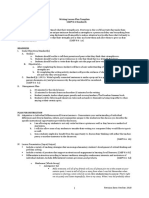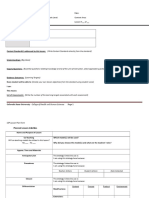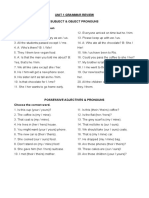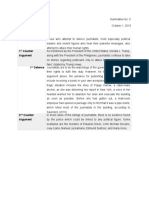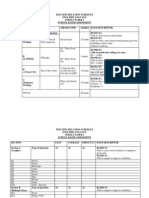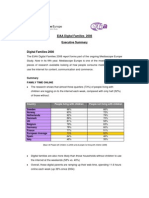0% found this document useful (0 votes)
32 views7 pagesNotes On Translation
Translation is the process of conveying the meaning of a text from one language to another, requiring an understanding of both linguistic and cultural contexts. It involves various approaches, including linguistic studies that focus on meaning, equivalence, and the structural aspects of language. Additionally, translation differs from transliteration and transcription, and encompasses both written and oral forms, with interpreters and translators possessing distinct skill sets.
Uploaded by
captainkaihiwatariCopyright
© © All Rights Reserved
We take content rights seriously. If you suspect this is your content, claim it here.
Available Formats
Download as PDF, TXT or read online on Scribd
0% found this document useful (0 votes)
32 views7 pagesNotes On Translation
Translation is the process of conveying the meaning of a text from one language to another, requiring an understanding of both linguistic and cultural contexts. It involves various approaches, including linguistic studies that focus on meaning, equivalence, and the structural aspects of language. Additionally, translation differs from transliteration and transcription, and encompasses both written and oral forms, with interpreters and translators possessing distinct skill sets.
Uploaded by
captainkaihiwatariCopyright
© © All Rights Reserved
We take content rights seriously. If you suspect this is your content, claim it here.
Available Formats
Download as PDF, TXT or read online on Scribd
/ 7





